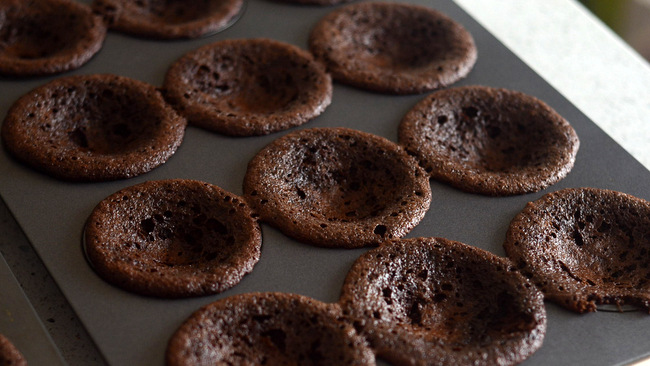
It is very disappointing to put a tray filled with cupcake batter into the oven only to watch them sink when you pull them out. There are quite a few reasons that cupcakes can sink during baking, unfortunately. To describe the baking process very simply, little pockets of air in the batter expand and force the cake to rise when cupcakes are baking. The heat of the oven should set the cake at maximum volume and it should stay in roughly the same shape as it cools. When a cake falls significantly during baking or during the cooling process, and there are quite a few possible reasons:
- Too much liquid in the cake batter. While too little moisture can have an impact on the batter, as well, too much liquid can make the cake heavier than its dry ingredients can support. It could be a poorly written recipe, but factors like incorrectly measuring the dry ingredients and the ambient humidity can also affect the outcome of a recipe (esp. in very humid places with very sensitive recipes).
- Overfilled cupcake liners. Most recipes will tell you how far up to fill your liners. In many cases, the cake gets a lot of support from those liners (or from the sides of the pan). If the cake rises up over the sides, the center is likely to fall.
- Incorrect mixing. The order that ingredients are added to a cake recipe is very important, as the butter, eggs and other ingredients all contribute to the way in which a cake rises. If you mess up the order of the ingredients, you may end up with a batter that doesn’t have as much air as it should for optimal rise. Working with an out-of-order recipe can also put you at risk for forgetting necessary ingredients.
- Under or over-mixing. Undermixing can yield a cake that doesn’t have enough aeration to rise properly, so be sure to cream your butter and beat your eggs as directed by the recipe. Overmixing your ingredients can produce a tough cake that shrinks back significantly during baking. Not every recipe is specific about the time that mixing requires (it can vary depending on the ingredients), so nailing your mixing is often something that comes with experience.
- Too much or too little leavening. Baking powder and baking soda are the two most commonly used leaveners in cupcake recipes. If your recipe contains too much, it may rise so rapidly that it then starts to fall in the oven. If your recipe doesn’t contain enough, it may simply not rise much at all. Test your baking powder and baking soda for freshness to ensure they are active. The leavening being off can be the fault of the recipe or result from incorrect measuring.
- Underbaking. Cupcakes that aren’t done baking before you remove them from the oven will often sink a little in the center. Be sure to do a toothpick test or gently touch the top of the cakes to see they spring back before pulling them out of the oven. Double check your oven thermometer to ensure that the cakes are baking at the correct temperature and that your oven is not too hot or too cold.
How to Save Sunken Cupcakes
No matter what is happening, keep baking them until they are done and baked all the way through because it is possible to save them! They may not look perfect, but they should still taste good and can be put to good use. If the cupcakes haven’t sunk too much, you can simply double the amount of frosting you were planning to use and pile it on to fill up the hole. A little extra frosting is never a bad thing and it will hide those flaws. When people take a bite of all that delicious cake and frosting, they won’t even notice that the top is a little sunken in.
If your cupcakes sink down to the point where you don’t feel comfortable just piling on the frosting, you can still use them, too! Allow them to cool, then peel off the wrappers and break the cake up into chunks. Layer these chunks with whipped cream/custard and fruit to make a trifle! This can be done in one large dish and served with a spoon, or constructed in small dessert dishes for individual servings.






What do you think?